You may be wondering how to choose a preschool that is the perfect fit for your child and family. I certainly understand just how overwhelming that task can seem. These tips will guide you through deciding on a preschool that’s right for your family.
If you’re a regular reader of Fun-A-Day, you know I have more than 10 years’ experience in early childhood education. I’ve taught kindergarten, Reading Recovery, and pre-kindergarten. So it’s not surprising that I’m often asked for advice for choosing a preschool.
Even with all of my own experience in early childhood education, I remember agonizing over where to send my son to preschool. Of course, that agonizing decision led to years of teaching preschool with some amazing teachers.
I wanted to make things easier for my fellow parents, so here are 7 tips for how to choose a preschool that suits your child.
How to Choose a Preschool That’s a Good Fit
First, narrow down your options by looking at location, hours, and price. Every family is different, so these considerations will vary based on your needs. Once you’ve narrowed it down to a few preschools, schedule a tour. The first tour is best done without the kiddos so you can focus on observing and asking questions.
While you’re touring the preschool, keep these seven factors in mind. They will be instrumental in choosing a preschool that’s the best fit for your child.
1. STAFF
Of the items on this list, preschool staff is definitely the most important! Keep an eye out for:
How teachers interact with students.
Teachers should get down to the students’ eye-level when talking. It’s also important to see real conversations taking place between the staff and the children. This shows a real interest in what the children have to say, as well as a real interest in the kids themselves.
Staff who obviously care about the children.
This can be seen in so many ways when you’re touring a preschool. You should see smiles and hear laughter in the classrooms. The staff members should be really listening to the students. There should be lots of interactions between teachers and students, as well as between students and their peers. Hugs, high fives, and encouraging words are great indicators too.
Staff who like what they are doing!
This is much harder to ascertain just from observing. Talk to the teachers, if at all possible, and a love for teaching will usually shine through! Ask the preschool director about the school’s turnover rate. If many of the teachers have been there for years, that’s a good sign.
Staff who have received adequate training.
The preschool director should be able to provide information about CPR training for teachers, as well as what professional development the staff receives.
2. SAFETY
A plan in place.
Ask the preschool director about the school’s emergency plans, as well as the teacher-student ratios. Take a look at the playground while you’re touring, too.
3. ENVIRONMENT
Classrooms with child-sized furniture.
The kiddos need to be comfortable while their little brains are growing.
Space to move around the classroom.
The rooms don’t need to be huge, but they should be adequately sized for the amount of kids there.
Print-Rich Classrooms.
Look for words labeling parts of the classroom and lots of books. Watch for teachers writing down children’s stories and look for kid-made books. These are just a few ways to spot a print-rich environment.
Student work around the classroom.
Students’ art, writing, building creations, and pictures should be evident around the classroom. It should feel like a space that belongs to them.
4. COMMUNICATION
Communication between the school and the parents.
Ask the director about a school handbook, as well as their communication habits. A handbook fills parents in on what to expect from the school. Monthly newsletters, calendars, and emails may be some ways the school communicates with parents.
Individual communication regarding your child.
Find out how individual teachers communicate with parents. It could be via daily notes, weekly emails, or communication apps. Remember there’s no one “right” way, but it’s important to keep the classroom connected to the home.
5. BEHAVIOR MANAGEMENT
Clear expectations and follow through.
Be sure to ask the director what behavioral guidelines are in place in the preschool classroom. There should be age-appropriate expectations, along with clear rules and consequences. Additionally, ask about how the staff teaches children to solve problems with their peers.
6. CLASS SCHEDULE
Lots of time “just playing”.
Children learn through play, so this is incredibly important! How much time is built in for the children to do just that? Often, this is referred to as “center time” or “choice time”. It’s the part of the day when children explore tons of concepts in small groups — maybe they’re building in the block center, telling a story about wild animals in the arctic, or exploring their names.
Varied group sizes.
The children should have some time together as a class, often called “circle time” or “calendar time”. There should be time for teachers to share books with the children, as well as time for the children to play in small groups. Children should also have some small group or one-on-one time with the teacher.
Time to play outside.
The kiddos need to be playing, running, climbing, riding bikes, etc. outside each and every day!
7. CURRICULUM
A teaching plan.
Please keep in mind — a preschool curriculum does NOT need to be purchased from a store. However, the director and teachers should know the goals for each age group in the preschool. These goals should be appropriate for the kids’ ages.
Hands-on activities.
Again, children learn through play. Their little bodies need to be fully immersed in the learning. Children should be holding books, touching blocks, moving math manipulatives, listening to music, dancing, etc. They definitely don’t need to be sitting down and filling in worksheets day after day.
Includes all the details.
Music, arts and crafts, lots of books, real pre-writing and writing activities, language experiences, sensory play, science experiments, etc.! Obviously, every day doesn’t need to include every single topic. But the preschool curriculum should focus on well-rounded children!
I’m sure by now it’s obvious I have some definite opinions about how to choose a preschool! Hopefully I was able to help you focus your thoughts about picking the preschool that’s best for your child.
If you’re child’s already enrolled, how did you go about choosing a preschool? Are there any points you would add to my list? I’d love to hear your thoughts in the comments below.
This was originally a guest post at Twodaloo.
Hands-On Preschool Materials
It is imperative that we keep our classrooms stocked with materials that will give our students the hands-on learning experiences that they love (and need!). There are a few specific things that I always keep on-hand in my classroom. Check them out in the list below.
I may get commissions for purchases made through links in this post.
- Crayons
- Glue
- Blocks
- Puzzles
- Safety scissors
- Dramatic play items
- Math manipulatives
- Dry erase markers
- Sensory items
- Play dough
- Craft supplies
- Playground balls
- Music and movement tools
- Books, books, and more books!
When it comes to preschool, this list is really just skims the surface of the wide variety of materials that can be used. The best thing about this age group is that they learn the most while playing. So, whether they’re playing on the playground, building with blocks, or creating a masterpiece, rest assured that the children are learning so many important skills, all while having fun!
Done-for-You Preschool Resources
Planning meaningful lessons for students week after week while balancing other teaching responsibilities and a personal life can be a daunting task. That’s where Preschool Teacher 101 comes in to save you time!
Preschool Teacher 101 has created some amazing preschool lesson and activity plans that will be perfect for your classroom. Click on the images below to learn more about our “The Kids at School” song pack and book set.
Join The Pack from Preschool Teacher 101 today for exclusive access to our content. We have a variety of membership options to suit your needs.
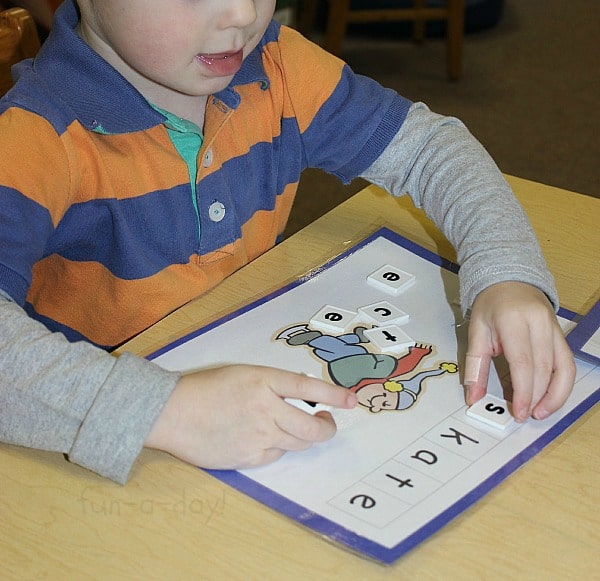
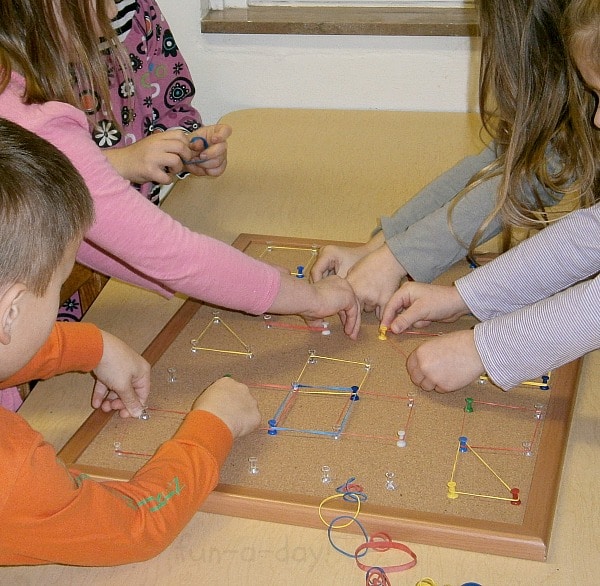
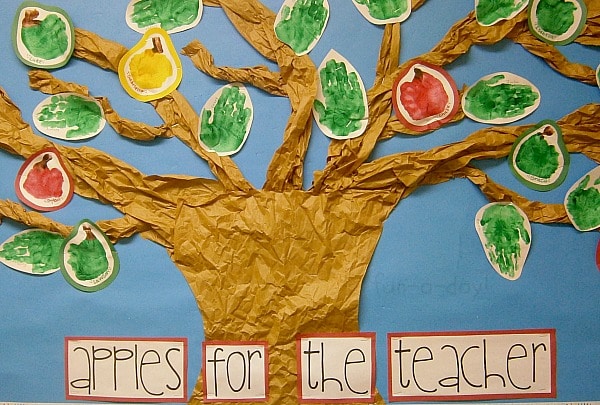
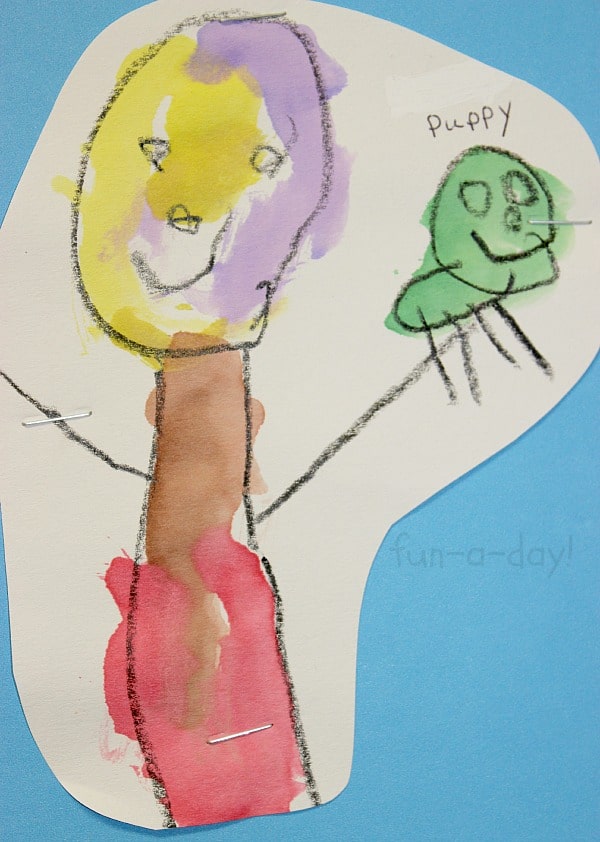
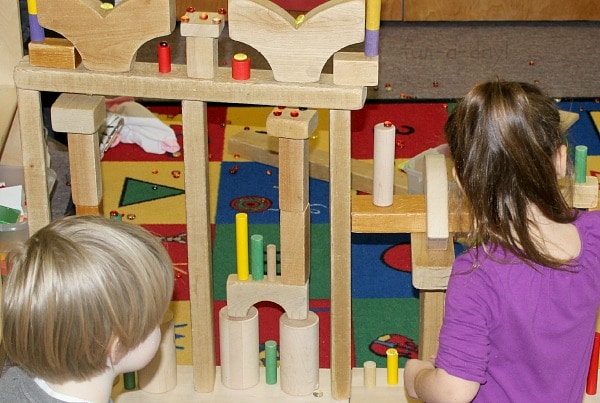

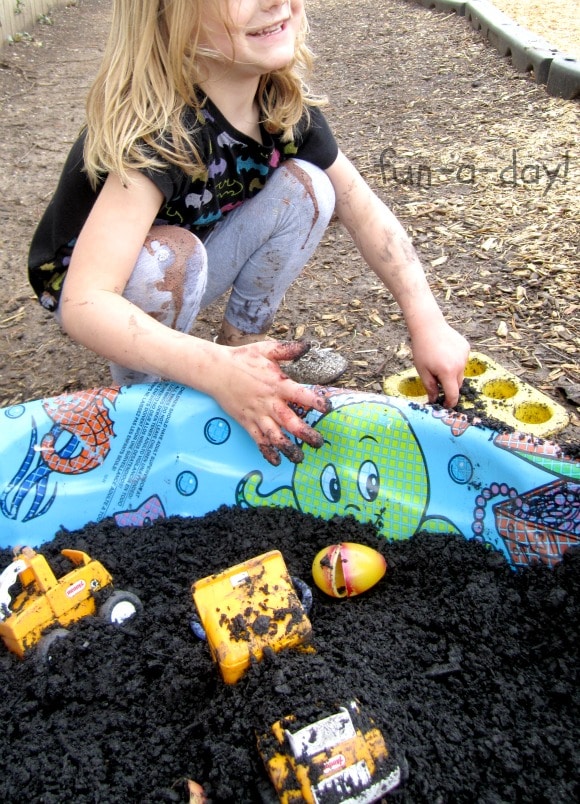
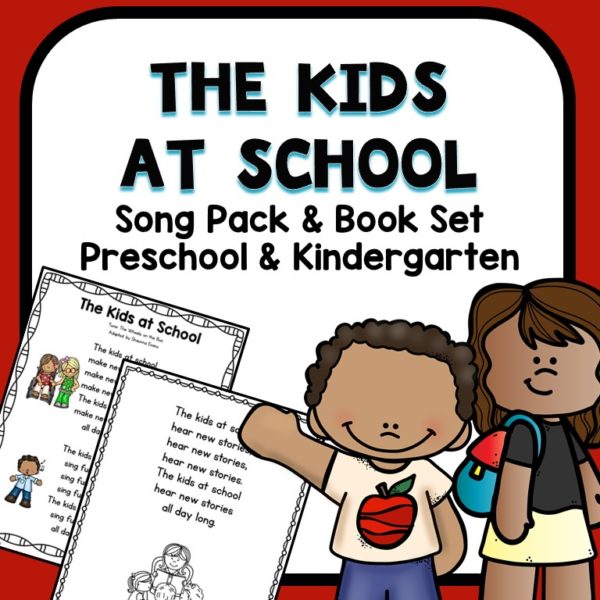
This is such a fabulous post- thanks so much for sharing it with my readers!
I am SO HAPPY to be visiting, Stephanie, and I really hope it helps our readers out when choosing a preschool. 🙂
For me, the staff is the most important part of a preschool. Like you say, the teachers should get down to the students’ eye-level. Things like that can make all the difference in the lives of the children. I’m going to be looking for a preschool for my first child this fall!
Yes, yes, yes! The staff can make ALL of the difference. Good luck in finding a preschool that’s the right fit for your family! 🙂
These are definitely some great things to consider when looking for a preschool. I think finding a good environment is vital. Things like student work hanging up and enough space to play around can really help kids fully enjoy preschool. At least, I remember liking it as a kid!
Yes, exactly!
I like that you say to look at how the preschool communicates with you. My sister is trying to find a good preschool for her daughter, and wasn’t sure what to look for. I know that I would want to have them be good at communicating with us.
Glad it helped. 🙂 Yes, communication between schools and parents is vital!
I have my three year old son who is joining preschool in a few months. Thanks for sharing. Now I can choose the best pre-school for him.
Glad I could help! 🙂
I really like that you pointed out choosing a school that lets the kids run around and learn, rather than just doing worksheets. I have been looking for a school to enroll my son in now that he’s old enough. I can see how it would be good to find a place where he can be active, so his first impression of schooling is a positive one.
Thanks so much for sharing your thoughts! 🙂
Awesome tips and well informative. We all want what’s best for our child and having a school which will fit the comfort and safety of our kids are our top priority. Anyways, great post!
Thank you!
Choosing the right early learning center or preschool is essential for establishing an education early one. I particularly like that you emphasize the importance of making sure that they have a good curriculum and plenty of play time. After all, while it is important for them to be learning, you want them to be outside and active as well.
Definitely – lots of outside, active play is essential to preschool!
I think finding the right preschool is vital for your child’s understanding of education on the whole. It can really mean the difference between them liking and disliking school altogether. Thank you for these tips, especially what you said about curriculum. I want my kids to have not only a hands on experience but learning that happens through a variety of mediums.
Thanks so much for stopping by. Yes, kids definitely need to be getting their hands on a wide variety of things!
Thank you for pointing out that you should look at communication withing the facility. My husband and I want to get our daughter early education. I’ll have to look into the best centers in my area.
Thanks for popping by!
This was indeed very helpful. Thanks a bunch
Happy you found it helpful!
I like that you said that I should check how a preschool and its teachers communicate with parents in choosing a preschool for my child. My husband and I are planning to enroll our three-year-old daughter in a reputable preschool this school year since I’m planning to work on my career again. I’ll follow the tips you wrote in your article to make sure that we pick the best preschool for my child. Thanks a lot!
I’m glad I was able to help a little bit. Good luck on the preschool hunt!